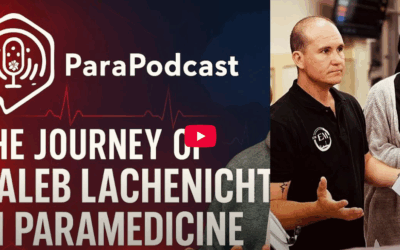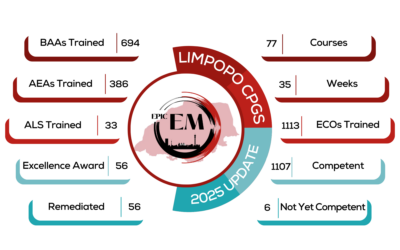Author: Kaleb Lachenicht, Director Epic EM and Chief Clinical Officer of ROCKET
In neonatal care, the focus is often on resuscitation, ventilation, and medical stabilization—and rightly so. But what about the moment that neonate needs to move?
Whether it’s from the delivery room to the NICU, from an ICU to a CT scanner, or from one hospital to another, neonatal transport is one of the highest-risk, highest-acuity tasks in emergency and critical care medicine. And yet, it’s one of the most overlooked skills in training.
🚨 Every Movement is a possible Critical/Adverse Event
A neonate in distress isn’t just another critical patient. Their physiology is fragile, their margin for error is razor-thin, and movement—whether across a hallway or across a province—can be the difference between survival and deterioration.
Neonatal movement is not just a transport problem. It’s an ICU problem. A NICU problem. An ED problem. A paramedic problem. If you work with sick neonates, movement is your problem.
🏥 In-Hospital Movement: Not Just a “Short Trip”
Many providers assume that moving a neonate within a hospital is low risk—but this is a dangerous misconception.
A neonate moving from the ward to CT scan may be off a ventilator for minutes that feel like hours.
A baby heading to NICU on a stretcher through a busy ED is at risk of dislodged lines, hypothermia, or hypoxia.
An ICU neonate transported to the operating room faces all the risks of resuscitation in a space not designed for neonates.
Every passageway, every lift, every handover is a moment where things can and do go wrong. Every in-hospital provider should know how to package and move a neonate safely.
🚑 Out-of-Hospital Neonatal Transport: One of the Most High-Stakes Jobs in Medicine
For those moving neonates outside of hospital walls—paramedics, flight teams, retrieval specialists—the stakes are even higher.
Pre-hospital neonates often receive their first critical interventions in an ambulance or helicopter.
Inter-hospital transport teams must maintain temperature, ventilation, circulation, and neurological protection in unforgiving environments.
Even a seemingly stable neonate can crash mid-transport if packaging, monitoring, or resuscitation is not meticulously managed.
🩺 Neonatal Movement is Everyone’s Responsibility
It’s easy to assume that moving a baby is someone else’s job—a specialized team, a transport service, a NICU nurse, a flight medic.
But in reality:
– ED teams must stabilize and prepare neonates for safe movement.
– ICU providers must be confident in ventilated transport within the hospital.- NICU staff must know how to secure their most fragile patients for transfer.
– EMS teams must understand the nuances of neonatal transport—this isn’t just “tiny adult” care.
If you work with neonates in any capacity, you must know how to resuscitate, package, and move them safely—because one day, you’ll be the one responsible when the unexpected happens.
🔥 Learn the skills of Neonatal Resus and Retrieval—Before You Need It
Moving a neonate safely isn’t instinctive—it’s a skill that needs to be taught, practiced, and drilled.
This is why the Neonatal Resuscitation & Retrieval Course exists:
Day 1: Neonatal Resuscitation – The latest evidence-based guidelines to stabilize and resuscitate sick neonates.
Day 2: Neonatal Transport & Movement – Whether it’s across a ward, down a corridor, or across the country, you’ll learn to move neonates safely—without making them worse.
Book here:
https://www.epicem.co.za/product/neonatal-resuscitaton-and-retrieval-course/
🛑 Because in neonatal transport, every movement matters.
#NeonatalCare #CriticalCare #NeonatalTransport #NICU #EmergencyMedicine




